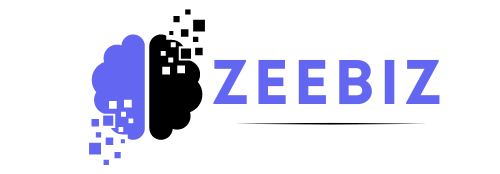The education landscape is vast, with millions of students around the world striving to learn and grow in various settings. However, when tasked with educating large numbers of Educators for 188000, for instance—teachers face unique challenges. Managing education on such a large scale requires not only an efficient system but also dedicated educators who can inspire, guide, and support their students through the learning process. In this article, we’ll explore the critical role of educators in large-scale education and how they contribute to the academic success of so many students.
The Importance of Teachers in Large Educational Systems
In any educational system, teachers are the foundation upon which learning is built. When dealing with 188,000 students, the importance of each educator becomes even more apparent. Each teacher must manage numerous responsibilities, from delivering lessons to tracking student progress, all while ensuring that every learner’s needs are met. In a system of this size, teachers often rely on teamwork, technology, and innovative teaching methods to maintain a high standard of education.
Challenges of Educators for 188000 Students
Educating 188,000 students is no small feat. Teachers and school administrators must contend with several challenges, such as:
- Class Size: Larger student populations often mean bigger class sizes. Managing a classroom with a high number of students can be difficult, as it requires more time to give each student the attention they deserve.
- Diverse Learning Needs: With such a large group, students are bound to have diverse needs—ranging from learning disabilities to different cultural backgrounds and varying proficiency levels.
- Resource Management: Schools with large student populations must be well-equipped with learning materials, technology, and support staff to assist teachers in their roles.
- Teacher Burnout: Managing hundreds of students can be exhausting. Teachers may struggle with stress and burnout due to the high demands placed on them.
The Role of Technology in Large-Scale Education
One of the ways educators can effectively manage large student populations is through the use of technology. Digital tools like online learning platforms, assessment software, and classroom management apps help teachers streamline their work and focus on delivering quality education. Here’s how technology can assist educators in teaching large numbers of students:
- Automated Grading and Assessment: Technology allows for faster grading of tests and assignments, giving teachers more time to focus on student engagement and personalized learning.
- Online Collaboration Tools: Digital platforms like Google Classroom or Microsoft Teams enable students to collaborate on projects, engage in discussions, and submit assignments, making it easier for teachers to manage multiple classes.
- Data-Driven Insights: Analytical tools help teachers track student performance, attendance, and engagement, allowing them to adjust their teaching strategies as needed.
Strategies for Managing Large Class Sizes
Educators who work with large numbers of students must be strategic in their approach to teaching. Below are some strategies that teachers can use to manage large class sizes:
- Group Work: Assigning students to small groups encourages peer learning and allows students to take more responsibility for their own education.
- Flipped Classrooms: In a flipped classroom model, students watch instructional videos or complete reading assignments at home, freeing up class time for interactive discussions, projects, and problem-solving.
- Differentiated Instruction: Teachers can cater to diverse learning needs by using differentiated instruction, which involves tailoring lessons to accommodate different learning styles, abilities, and interests.
- Classroom Management Techniques: Using effective classroom management techniques, such as clear expectations and consistent routines, helps maintain order and allows teachers to manage their classrooms more efficiently.
The Importance of Professional Development for Teachers
When dealing with a large student population, ongoing professional development is essential for teachers. Continuous learning enables educators to stay up to date with the latest teaching techniques, technological advancements, and educational theories. Professional development can come in various forms, including:
- Workshops and Seminars: Teachers can attend training workshops on classroom management, new technologies, and teaching strategies to improve their skills.
- Collaborative Learning Communities: By participating in professional learning communities (PLCs), teachers can share best practices, discuss challenges, and work together to find solutions.
- Online Courses and Certifications: Many educators pursue advanced degrees or certifications to deepen their knowledge and improve their teaching effectiveness.
The Role of Support Staff in Large-Scale Education
In any educational institution serving 188,000 students, support staff plays a crucial role. Counselors, librarians, teaching assistants, and administrative staff all contribute to the smooth running of the school and help alleviate some of the pressures teachers face. Their support ensures that educators can focus on their primary goal—teaching and nurturing the next generation.
Building Strong Teacher-Student Relationships
Despite the challenges of large-scale education, teachers can still build strong relationships with their students. These relationships are crucial for student success, as they foster trust, motivation, and engagement in learning. Here are a few ways teachers can nurture strong connections with their students:
- Personalized Feedback: Providing constructive feedback helps students understand their strengths and areas for improvement, while also showing that the teacher is invested in their success.
- Active Listening: Taking the time to listen to students’ concerns and ideas creates an environment where students feel valued and understood.
- Encouragement and Support: Offering encouragement and emotional support boosts student confidence and fosters a positive learning environment.
The Impact of Large-Scale Education on Student Outcomes

Although educating 188,000 students presents many challenges, it also offers opportunities for innovation and growth. By leveraging technology, employing strategic teaching methods, and fostering strong relationships, educators can have a positive impact on student outcomes. With the right resources and support, large-scale education systems can achieve impressive results.
Conclusion
Educating 188,000 students is a monumental task, but with dedicated educators, innovative technology, and strategic teaching methods, it is possible to provide quality education on a large scale. Teachers play a crucial role in this system, and their ability to adapt to challenges while maintaining a focus on student success is key. As educational systems continue to evolve, so too must the strategies and tools used to ensure that all students have access to the best possible learning experiences.
FAQs
What is the biggest challenge for teachers in large-scale education?
The biggest challenge is often managing large class sizes while ensuring that each student receives personalized attention and support.
How does technology help in large-scale education?
Technology helps by providing tools for automated grading, online collaboration, and data-driven insights, making it easier for teachers to manage large numbers of students.
What is differentiated instruction?
Differentiated instruction involves tailoring lessons to meet the diverse needs, abilities, and interests of students, ensuring that everyone can learn effectively.
How can teachers prevent burnout in large educational systems?
Teachers can prevent burnout by practicing good time management, seeking support from colleagues and support staff, and engaging in professional development.
What role do support staff play in large-scale education?
Support staff such as teaching assistants, counselors, and administrative personnel provide essential help, allowing teachers to focus on delivering high-quality education.











